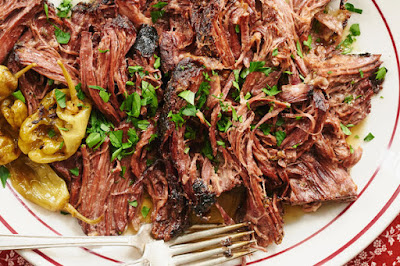Teapots and Kettles: Sip, Sip, Hooray!
I'm a little teapot, Short and stout.
Here is my handle,
Here is my stout.
When I get all steamed up,
Hear me shout,
Tip me over and pour me out!
"I'm a Little Teapot" is an American children's song written by George Harold Sanders and Clarence Z. Kelley and published in 1939. It was one of the first songs, complete with movements, that I sang as a child (and still remember). When the verse "Here is my handle," we were taught to put our right hand on our hip. When we sang "Here is my spout," we brought our left arm into the air and crooked it like a spout, bending our elbow and wrist. Finally, we tipped to our left to "pour me out."
 |
| Finally! I bought the hand-painted MacKenzie-Childs tea kettle I had been admiring for a couple of years |
 |
| Vintage Franciscan Dessert Rose teapot gifted by my mother-in-law with matching cream and sugar |
Teapots originated in China during the Ming Dynasty (1368-1644) with the advent of loose-leaf tea, becoming a symbol of hospitality and a staple in traditional tea ceremonies.
In the 17th century, Portuguese and Dutch merchants introduced tea and Chinese teapots to Europe. European artisans eventually adapted the teapot's design, with England, in particular (of course), developing its own graceful styles, such as the silver and porcelain teapots of the Victorian era, which became symbols of elegance.
In a society of cardboard papercups of coffee, it's gratifying and a small gift to ourselves to take the time to sip a "cuppa" tea in the middle of the afternoon, especially when the tea is poured from a lovely teapot.


Comments
Post a Comment